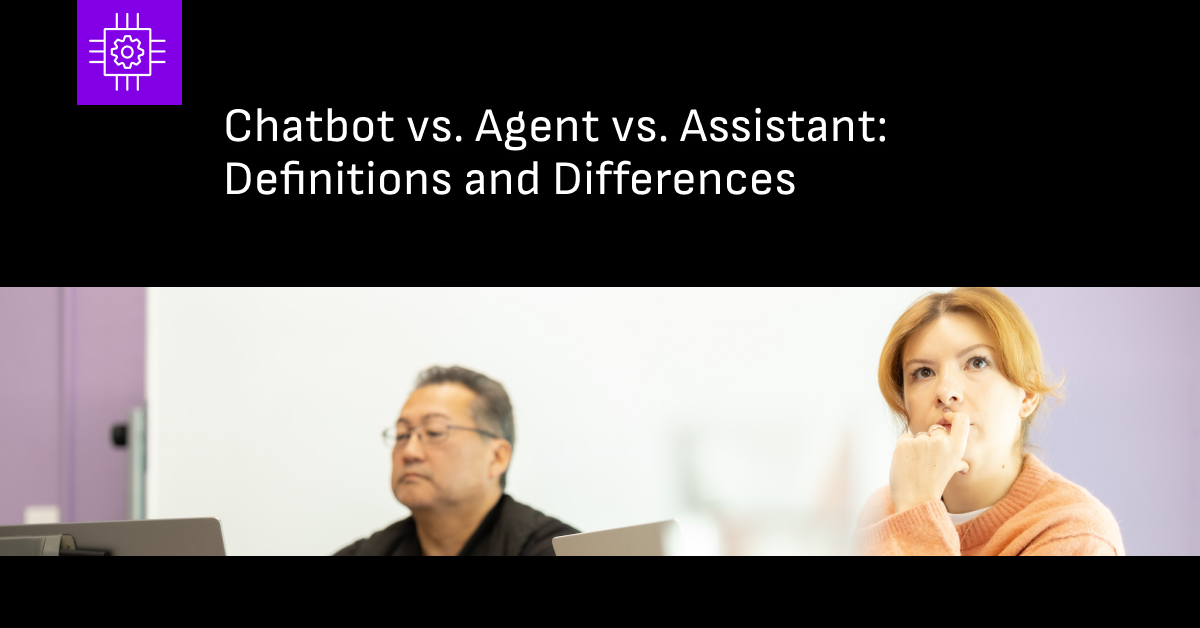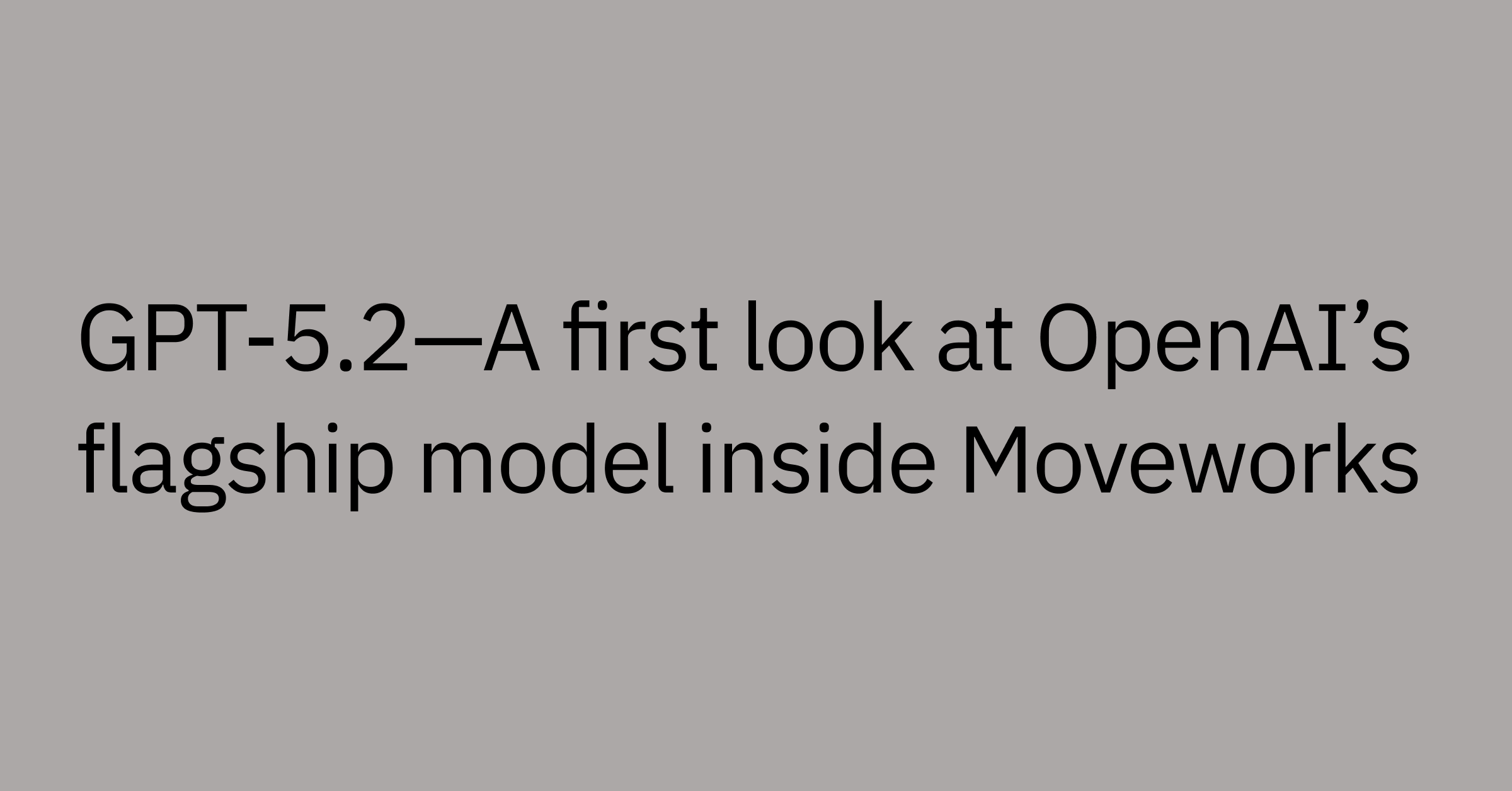Table of contents
AI-powered chatbots, agents, and assistants are transforming business operations — automating tasks, supporting employees, and improving customer engagement.
But with so many AI-driven tools available, how do you know which one is right for you?
With investment in AI expected to hit $1.3 trillion by 2030, businesses everywhere are doubling down on automation to streamline operations and boost productivity. In fact, 82% of companies plan to integrate AI agents within the next few years.
But not all AI tools are created equal.
Should you use a chatbot for quick responses, an AI agent for decision-making, or an AI assistant to streamline workflows? And what exactly sets them apart?.
Let’s explore the strengths, limitations, and ideal use cases for each — so you can confidently choose the right AI solution for your business.
Primary user | Businesses focused on customer service and engagement | Organizations automating dynamic tasks and workflows for efficiency | Businesses optimizing workflows and productivity |
Key characteristics | Rule-based or AI-driven conversational tools for handling structured queries | Task-focused automation, follows instructions but can take proactive steps | Context-aware assistants that collaborate with users to enhance improved operational efficiency |
Ideal use cases | Answering FAQs, booking appointments, front-line customer support | Self-driving cars, data analysis, process automation, recommendation algorithms | Scheduling, setting reminders, managing cross-system operations, operational efficiency |
Limitations | Struggles with complex queries, lacks contextual understanding, challenged by dynamic tasks | Can require integration and customization to handle specific, tasks effectively, | Effectiveness depends on system integration and precise user input |
Level of autonomy | Low — responds to predefined inputs and lacks contextual adaptability | High — operates with minimal user input, making complex decisions autonomously and adapting in real time | Moderate — balances automation with human collaboration for efficiency |
What is a chatbot?
A chatbot is a software application that interacts with users through text or voice, using predefined rules or artificial intelligence (AI) to simulate human-like conversations and automate tasks.
While early chatbots followed rigid decision trees, modern AI-driven chatbots use natural language processing (NLP) and machine learning to generate more dynamic, context-aware responses.
Imagine you're chatting with a virtual assistant that understands your questions, provides relevant information, and even helps you complete tasks — all with little to no human intervention. That’s exactly what a chatbot does.
How chatbots work
Chatbots are among the earliest forms of conversational AI, but they have evolved significantly from their simple rule-based predecessors.
While early chatbots followed strict, predefined scripts, modern AI chatbots leverage natural language processing (NLP) and machine learning to understand and respond to user queries more dynamically.
For example, an employee needs to reset their password. A traditional chatbot might provide static, pre-written instructions. A more advanced AI chatbot can:
- Verify the employee’s identity
- Process the reset request automatically
- Escalate to human IT support if needed
This ability to handle routine, well-defined interactions efficiently makes chatbots valuable for automating repetitive tasks, reducing response times, and improving user experiences.
Benefits of chatbots | Limits of chatbots | |
Scalability
Handles thousands of simultaneous interactions, reducing customer support costs.
24/7 availability
Provides instant responses, ensuring uninterrupted user assistance.
Speed and efficiency
Reduces wait times by resolving basic inquiries instantly.
Data collection
Captures insights from user interactions to improve automation and customer experience. |
Limited context awareness.
Struggles with complex or ambiguous queries that require reasoning.
Without integration with user data, interactions can feel impersonal.
Escalation gaps, chatbots need well-defined fallback mechanisms for cases they can’t resolve.
|
Use cases for chatbots
Chatbots are great at tackling simple, repetitive tasks that follow clear patterns.
Customer support
In customer service, they can handle first-line support by answering FAQs, directing customers to external knowledge bases, processing basic service requests, and gathering initial info before passing things on to human agents when needed.
And they're good at what they do: Gartner predicts that chatbots will become the primary customer service channel by 2027, continuing to cut down wait times and save on operational costs.
IT and HR help desks
Chatbots are also helpful in internal operations. They can make life easier for employees by handling simple HR requests, such as answering common PTO or benefits questions and eliminating mundane IT help desk requests.
By taking care of these routine tasks, they free up support teams to focus on more complex and high-value work.
What is an AI assistant?
An AI assistant (or virtual assistant) is a software application that uses artificial intelligence to perform tasks, provide information, and automate certain tasks and workflows based on contextual user input. These assistants typically use conversational AI to respond to voice or text commands, typically via a chat interface or voice-activated system.
Unlike basic chatbots, AI assistants can:
- Interpret user intent rather than just recognizing keywords
- Learn from past interactions to improve future responses
- Integrate with business systems to automate complex workflows
Benefits of AI assistants | Limits of AI assistants | |
24/7 availability Like other AI tools, assistants are available for round-the-clock support.
Personalization They can provide a level of personalization that other tools cannot, with the ability to learn over time and understand context based on input.
Automation They’re great for tasks like scheduling, setting reminders, and retrieving data, reducing workload for employees.
Improved decision-making AI assistants can analyze data and generate insights to enhance business operations. | Dependence on consistent and accurate user input for effectiveness.
Privacy concerns regarding personal data and confidentiality breaches.
May struggle with highly complex or novel tasks, especially under-explored scenarios
Ability to understand context can be limited to certain phrasing or linguistic nuances |
Use cases for AI assistants
IT support and help desks
When IT issues inevitably creep up, AI assistants can pull up documentation, update software, or reset passwords, all without needing a human to step in. They can learn from patterns in interactions, making their responses improve over time.
For instance, if someone reports a common software issue, the assistant can quickly search for solutions and suggest fixes. This reduces downtime and frees up IT teams to tackle more complex requests.
Business operations and workflow automation
AI assistants act as workflow champions, bringing systems like CRM, ERP, and HRIS together into one smooth user experience. They take care of repetitive tasks like pulling data, generating reports, and managing workflows, so teams can focus on what really matters.
Advanced AI assistants are also great at document management, including summarizing reports, extracting insights, and keeping key info at your fingertips.
Team collaboration and communication
AI assistants help break down silos and keep communication flowing smoothly. They coordinate tasks, track deadlines, and automate status updates to ensure projects stay on track.
With context awareness and a memory of past interactions and conversations, they can provide consistent communication across teams and tools, helping everyone stay on the same page in real time.
Want to see AI assistants in action?
See how Sitecore improved its IT operations and employee engagement using AI. Watch the webinar to learn about their AI rollout strategy, from pilot groups to full adoption.
What are AI agents?
An AI agent is an advanced artificial intelligence system that can:
- Collect inputs
- Analyze situations
- Make autonomous decisions
- Take actions within its environment
Unlike chatbots, which primarily respond to user queries using rigid responses, in an enterprise context, AI agents can help to automate workflows, optimize processes, and improve operational efficiency across business systems— all with minimal human intervention.
What truly sets AI agents apart is their autonomy and adaptability. While chatbots follow scripted conversations, AI agents evaluate data, recognize patterns, and decide the best course of action when executing complex tasks based on real-time inputs.
How AI agents work
AI agents bring together some powerful tech to make this happen:
- Large language models (LLMs) for better understanding and communication
- Machine learning for constant improvement
- Decision-making frameworks for independent action
- Use sensors and integrations to retrieve and process data
One of the strengths of AI agents is how their abilities can exponentially grow when combined into multi-agent systems. When AI agents work together, they form an agentic AI system — a network of intelligent agents that:
- Distribute tasks across specialized AI components
- Adjust strategies based on real-time data
- Optimize workflows with little to no human intervention
- Demonstrate much higher degrees of autonomy
- Learn more effectively from their experiences
Benefits of AI agents | Limits of AI agents | |
Scalability: AI agents can process vast amounts of data and execute multiple workflows simultaneously.
Advanced automation: They’re ideal candidates for automating complex and repetitive tasks with minimal human input.
Data-driven decision making: AI agents use AI models to provide real-time insights and decisions.
Continuous learning: Improve efficiency and accuracy by adapting to new data over time. | Requires complex programming and training for optimal performance and accuracy.
Potential for ethical concerns regarding autonomous decisions and their repercussions.
High initial development costs, in some cases with ongoing updates.
Situations where total control and oversight are required for compliance and safety. |
Use cases for AI agents
AI agents excel at handling complex decision-making and coordinating across different systems, especially in multi-agent systems. Agentic AI can be used in a variety of enterprise functions, combining the capacity for perception, reasoning, action, and continuous improvement.
IT operations and system management
In IT, AI agents work together as a team, with each agent able to focus on a specific part of system management.
One might keep an eye on system health and predict issues, another could analyze security patterns, and a third might take action to fix problems — all working together to keep everything running smoothly.
This multi-step approach lets the system track thousands of data points, catch security threats, and tackle performance issues before they affect users.
Customer support and service optimization
AI agents can also support customer support, collaborating to provide quick and effective service.
A perception agent analyzes incoming customer queries, a reasoning agent decides actions, an action agent resolves or escalates issues, and a learning agent improves responses over time.
Data analysis and business intelligence
Businesses across all industries can also leverage AI agents for data analysis: They’re ideal tools for collecting, processing, analyzing, and visualizing datasets without the need for human coding.
They can spot patterns, trends, and relationships in the data, giving you actionable insights for smarter decisions.
Plus, these agents can adapt their actions as they process new information, so that your insights stay updated and relevant to the business.
Chatbot vs. agents vs. assistant vs. agentic AI: 5 key differences
As businesses evaluate AI technologies for their operations, knowing the distinct capabilities and limitations of each option becomes a must for making informed investment decisions.
Let's explore five major differences that define their effectiveness in enterprise environments.
Understanding the key differences
1. Primary user
The primary users for agentic AI include industries like finance, healthcare, manufacturing, and retail. Departments such as HR, customer service, and operations also rely on this agentic AI because it can help automate tasks, make complex decisions, and manage large volumes of data efficiently and accurately.
Chatbots are designed primarily for customer service and engagement — handling structured queries like FAQs and appointment scheduling.
AI assistants are perfect for businesses seeking to optimize workflows and manage tasks more effectively, integrating with multiple enterprise systems to improve productivity.
2. Key characteristics
Agentic AI stands out due to its high autonomy and advanced learning capabilities, allowing it to make decisions on its own.
AI agents are more task-focused and follow instructions but stay flexible enough to take proactive steps when needed.
Chatbots are designed for conversations, using either set rules or AI-driven responses to handle specific topics.
Meanwhile, AI assistants give personalized assistance, task management, and information retrieval — going well beyond simple conversation handling.
3. Ideal use cases
The real-world uses of these technologies show just how well they’re built for their specific purposes.
For example, consider high-level applications like self-driving cars, financial trading, and spotting cybersecurity threats. This is where agentic AI systems shine.
AI agents are great for things like customer support, data analysis, and automating processes.
Chatbots are perfect for simple tasks like answering FAQs, handling customer inquiries, or booking appointments — serving as first-line support.
Meanwhile, AI assistants enhance productivity and collaboration by setting reminders, managing schedules, and automating enterprise operations, while handling large volumes of data with precision and efficiency.
4. Limitations
Before you decide what tools your business needs, you need to be realistic about the tools’ limitations.
Agentic AI systems may come with high development costs and occasional unpredictability in complex scenarios.
Chatbots aren’t great with complex questions and can lack real understanding, limiting their conversational depth. Not to mention, you might have to phrase things just right to get the best results!
And when it comes to AI assistants, how well they work really depends on how smoothly they’re integrated or if they’re given a task requiring deep, specialized knowledge.
5. Level of autonomy
The level of independence varies significantly across these technologies, affecting how well they can handle tasks without needing user input.
At one end of the spectrum, you have highly autonomous agentic AI systems that can make complex decisions on their own. In the middle are AI agents and assistants, which strike a balance between working independently and collaborating with users.
On the other end, chatbots can only respond to direct inputs.
AI agents + AI assistant = Agentic AI assistant
When an AI assistant uses AI agents, this can enable it to autonomously manage complex tasks and adapt to dynamic environments, improving efficiency and decision-making processes.
And you’ve likely already used an agentic AI assistant, even without realizing it.
- Consumer assistants: Apple Siri, Amazon Alexa, and Google Assistant
- Enterprise AI assistants: AI-powered workplace automation tools like Moveworks that streamline IT support, HR processes, and business operations
This end-to-end automation saves time, minimizes errors, and reduces the need for manual coordination.
Curious how AI agents can transform your workplace? Watch this webinar to learn how leading companies are using AI for smarter automation, faster decision-making, and seamless workflows.
Agentic AI assistants: The future of business automation
As businesses grow and evolve, the limitations of traditional chatbots are becoming hard to ignore.
Sure, chatbots are great for handling straightforward, routine tasks, but they often fall short when it comes to the complex reasoning and adaptability modern enterprises need.
The future of automation lies in combining AI agents and assistants.
Together, they create systems that offer powerful reasoning, high adaptability, and a user-friendly experience. Here’s how this next level of AI is tackling major business challenges:
Boost productivity with better self-service
Agentic AI assistants make operations more efficient by empowering employees to problem-solve their own issues and access resources without always needing IT support.
By handling a wide range of tasks and providing intuitive self-service options, these systems cut unnecessary tickets, lower support costs, and boost employee satisfaction.
Expand capacities with integrations
When integrated with your business systems, agentic AI helps enable:
Autonomous handling of processes
Real-time adjustments to changing conditions
Continuous learning from sensors or user interactions
Scalability to grow alongside your business
For example, when kicking off a new project, these systems can create documentation, set up permissions, schedule meetings, and track progress too.
Transforming how enterprises operate
Combining autonomous decision-making with system integrations is reshaping workplace productivity. Here's what that looks like in action:
Full automation of certain processes, reducing manual inputs
Smarter collaboration across departments and systems
Greater efficiency in tasks and resource management
Better decision-making through advanced data analysis
What’s more, these systems are flexible and customizable, allowing businesses to tailor solutions to their specific user needs while staying consistent across the organization.
Learn how an Agentic AI assistant can enhance your workplace
With agentic AI, businesses can go beyond basic automation and build intelligent workplaces where technology actively supports and enhances human productivity.
The future of AI-supported workplaces is here — where agentic AI tools, like Moveworks AI Assistant is designed to provide:
- Enterprise-wide support: Unlike traditional AI tools that handle single tasks or specific departments, Moveworks integrates seamlessly across your organization, providing end-to-end automation.
- Seamless integration: Connects effortlessly with Slack, Microsoft Teams, ServiceNow, Workday, and more to eliminate silos and enable frictionless collaboration.
- Instant, personalized responses: Whether it’s IT support, HR requests, or workflow automation, Moveworks delivers fast, context-aware assistance — reducing wait times and minimizing employee frustration.
- Security and compliance at scale: Enterprise-grade security, compliance, and adaptability to grow with your business.
Optimize your business operations with the Moveworks Agentic AI Assistant — a solution that goes beyond automation to empower employees, accelerate workflows, and drive efficiency across your organization.
Download this white paper to discover how agentic AI is enabling faster development, simplifying processes, and a future where AI seamlessly powers the enterprise.



